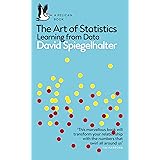Calculate the Median in SPSS: Guide
Calculate the Median in SPSS: Guide, When it comes to data analysis, choosing the right statistical measure is crucial. One of the most important measures in descriptive statistics is the median.
Calculate the Median in SPSS: Guide
In this in-depth guide, we will explore what the median is, its significance, and how to compute it using SPSS (Statistical Package for the Social Sciences).
Whether you are a novice in data analysis or an experienced researcher, understanding how to calculate and interpret the median in SPSS can elevate your statistical skills.
What is the Median?
The median is the middle value in a dataset when the numbers are arranged in ascending or descending order.
Unlike the mean, which can be significantly affected by extreme values (outliers), the median provides a more accurate representation of the central tendency for skewed distributions.
As a robust measure of central location, the median is often used in various fields including psychology, healthcare, and social sciences.
Why is the Median Important?
Understanding the median is critical for several reasons:
- Resilience to Outliers: The median is not influenced by extreme values, making it a reliable indicator of central tendency for skewed distributions.
- Data Interpretation: The median helps in understanding the distribution of data and can provide insights into the overall trends in a dataset.
- Comparative Analysis: The median is often used in comparative studies to evaluate differences between groups, especially when analyzing non-normally distributed data.
How to Calculate the Median in SPSS
Calculating the median in SPSS is straightforward. Follow these simple steps to derive the median from your dataset:
Step 1: Prepare Your Dataset
Ensure that your data is properly entered into SPSS. Each variable should be in a separate column with appropriate labels.
Step 2: Open the ‘Descriptive Statistics’ Menu
- On the SPSS toolbar, click on ‘Analyze’.
- Navigate to ‘Descriptive Statistics’.
- Select ‘Frequencies…’ or ‘Descriptives…’.
Step 3: Choose Your Variable
- In the dialog box, select the variable for which you want to calculate the median.
- Move it to the right using the arrow button.
Step 4: Specify Statistics
- Click on the ‘Statistics’ button.
- In the statistics dialog box, check the option for ‘Median’.
- Click ‘Continue’ and then ‘OK’.
Step 5: Interpret the Results
After executing, SPSS will generate an output window displaying the median along with other descriptive statistics. The median value will be listed, allowing you to interpret it in the context of your research or analysis.
Example of Calculating Median
Let’s say you have a dataset about students’ test scores in a class. The scores are as follows: 56, 78, 45, 67, 89, 90, 34.
Sorting the Scores
First, arrange the scores in ascending order:
34, 45, 56, 67, 78, 89, 90
With this sorted list, finding the median becomes easier. In this case, the median is 67, as it is the middle number of the sorted data set.
Practical Applications of the Median
The median has extensive applications across various fields:
1. Healthcare
In healthcare research, the median is often used to report the survival rates of patients. When data is skewed due to a few exceptionally long or short survival times, the median offers a clearer picture of patient outcomes.
2. Economics
Economists rely on the median income to understand wage distribution among different populations. The median income is less impacted by extremely high or low earners, making it a more reliable indicator of general income levels.
3. Education
Educational assessments often report median scores to provide insights into student performance without being skewed by outliers.
Conclusion
The median is a powerful statistical measure that offers valuable insights into data distributions. Learning how to calculate and interpret the median in SPSS is an essential skill for researchers and analysts.
By leveraging the median, you can enhance your data analysis capabilities, ensure robust statistical reporting, and make informed decisions based on a deeper understanding of your dataset.
By mastering these techniques, you will not only improve your analytical skills but also enhance your research outcomes.
So, dive into your dataset today and start exploring the significance of the median in your analyses! Don’t forget to utilize this guide as a reference whenever you need help calculating the median in SPSS.
Data Manipulation Techniques with dplyr



